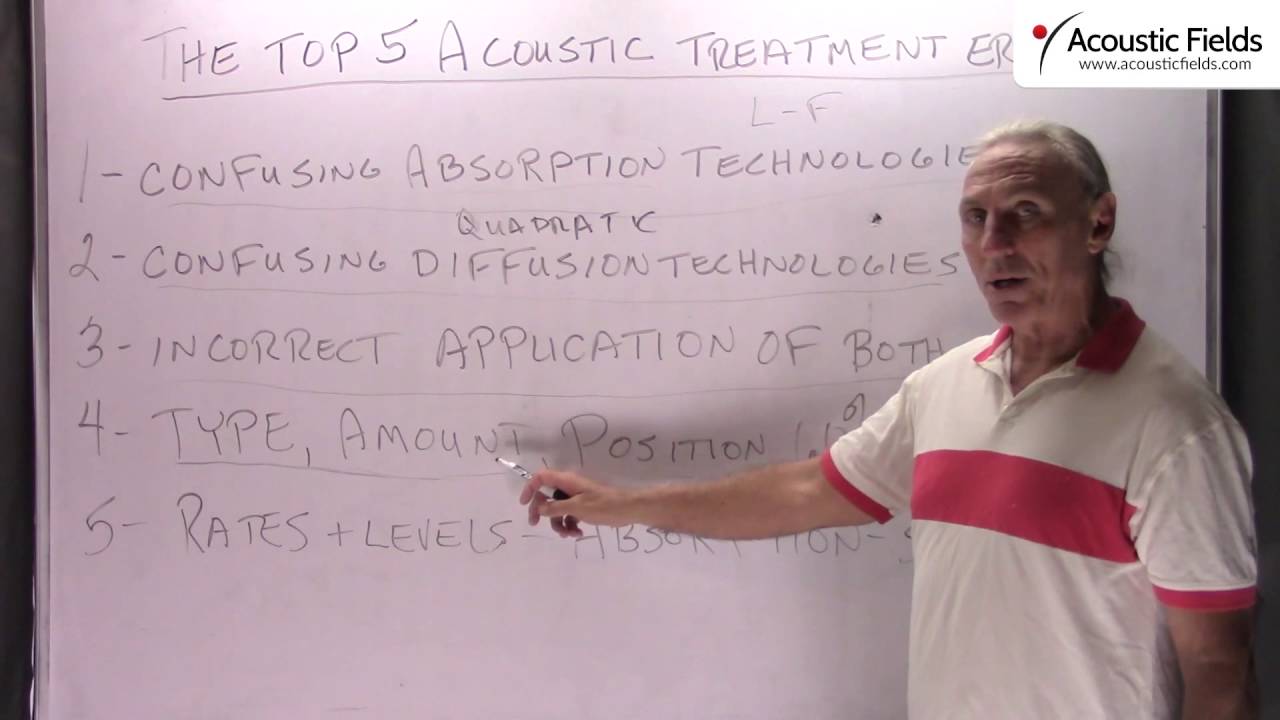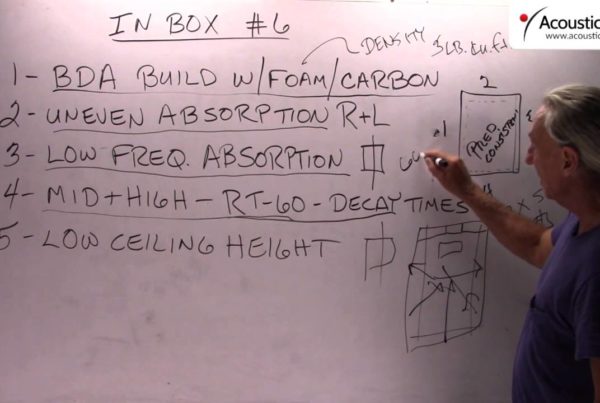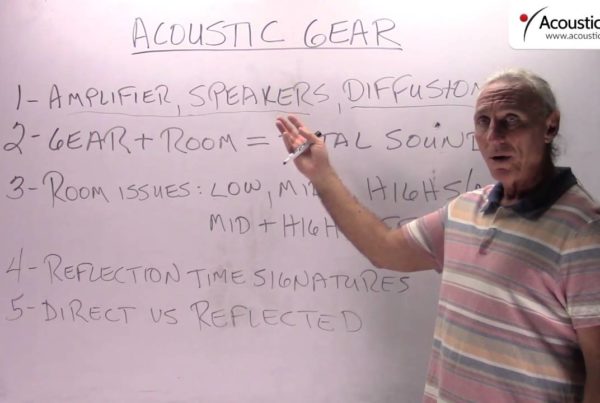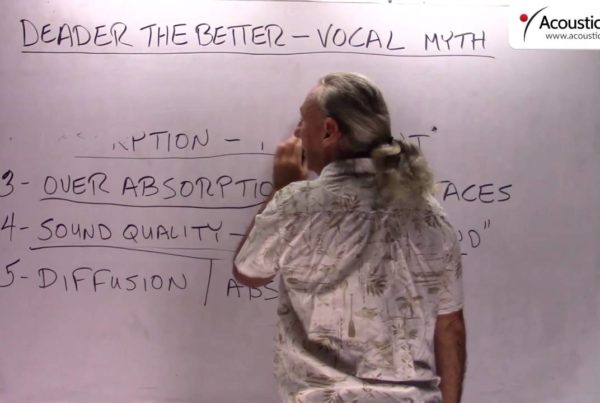Today we’re going to talk about the top 5 acoustic treatment errors that we see a lot here.
The first one is confusing absorption technologies. A lot of people think foam is a low frequency absorption technology. Nothing could be further from the truth. I don’t care what acoustic products manufacturers say. I don’t care what your friends say. I don’t care what anyone has told you and I don’t really care what you read in the literature. Because foam is not a low frequency absorption technology.
So you must make sure you define the technology that you’re going to use for the particular application. And it’s a step-by-step process. So you want to make sure that you match the proper absorption technology with the issues. Like low frequency issues you would never use foam for. You would use membrane, you would use diaphragmatic or some other form. There’s not too many others but you want to make sure that you’re using the proper absorption technology to match the issue you’re trying to deal with.
Here’s another issue that we see: confusing diffusion technologies. There’s a lot of products out there in the marketplace, I even saw a piece of foam the other day with some bumps on it that was called a diffuser. Nothing could be further from the truth.
There’s only one real diffusion technology that satisfies the 5 criteria that are necessary for true diffusion. And these are 5 complicated criterias that are technical. We won’t go into them now in this video, we’ll address them in another video. But quadratic diffusion is the only diffusion that satisfies all those objectives in order to be called a true diffusion technology. So that’s why we use quadratic because it’s predictable and consistent, okay?
Here’s another issue we see. We see incorrect application of both technologies. We see diffusion being applied where absorption should really be used. And then we see absorption being applied where diffusion should be used. So you want to make sure that you’re using the correct application of the technology.
And here’s another issue that we see. We see some – a lot of people will take a 2 foot by 2 foot diffuser, place it on the rear wall and say all right, I’ve treated my rear wall with diffusion. Well, you’re half right. You’ve treated your rear wall with diffusion if it’s quadratic but you haven’t used enough of it across the surface of the wall to manage the reflected energy off that surface. Most surfaces require 60% to 80% coverage based on our experience. And you can see on our website all the projects that we do that we pretty much follow that rule and then some, okay?
So you have to have the particular type absorption or diffusion, how much are we going to use and where are we going to put it? All that has to be calculated. You can’t guess in acoustics. There’s too many variables. I’ve been doing this for 40 years and sometimes I will guess wrong. So those of you with way less experience don’t have a chance.
So there are just too many variables to address and you must get this right or you’ll never be happy with the result. You’ll spend all this time all, all this money, hit the play button and be disappointed. And there’s nothing worse than that, believe me.
So here’s another issue we see: rates and levels of absorption. People don’t understand – let me go over here and get you – here’s a piece of our 2 inch foam here. A lot of people don’t understand that a 2 inch piece of foam has a completely different rate and level of absorption than a 1 inch piece of foam. Let’s see here. We have a 1 inch piece of foam here. So you can see that obviously they’re half as thick. So we’re going to have different rates and levels of absorption.
Now, you must match those rates and levels of absorption with the requirement of the room. Is it a control room? Is it a live room? Is it a listening room? Is it a home theater room? All of these variables have to be address. So you have to get the right rates and levels of absorption for the particular room usage that you’re trying to accomplish and then make sure that you address the surface area.
So let’s define our technologies that we’re going to use and make sure it’s really an absorption technology and we’re really using it at the right rate and level for that particular usage. Make sure we use quadratic diffusion for any diffusion technology. Most other devices out there are sound redirection devices, not really true sound diffusion devices.
So we want to make sure we apply both technologies to the usage of the room. For example in a listening room if your side wall distances are close and you use quadratic diffusion you may just increase the problems that you’re having. You may increase the unbalance between the side wall reflections and the direct energy. So you want to make sure you apply both of them.
What kind of technology are we going to use? How much are we going to use? And very important, where are we going to place it? Make sure we cover enough surface area with it. With absorption choose rates and levels of absorption that match the usage. With diffusion, choose the frequency response that matches the usage. The frequency response of a rear wall in a control room will be different than the frequency response of diffusion that you need in your listening room and home theaters.








Thanks for all the useful information .. going to make my own theatre room .
Hi Jon, Make sure you have proper size and volume to match usage. Theater rooms have larger dimension and volume requirements because of all the low frequency energy and multiple mono sources.